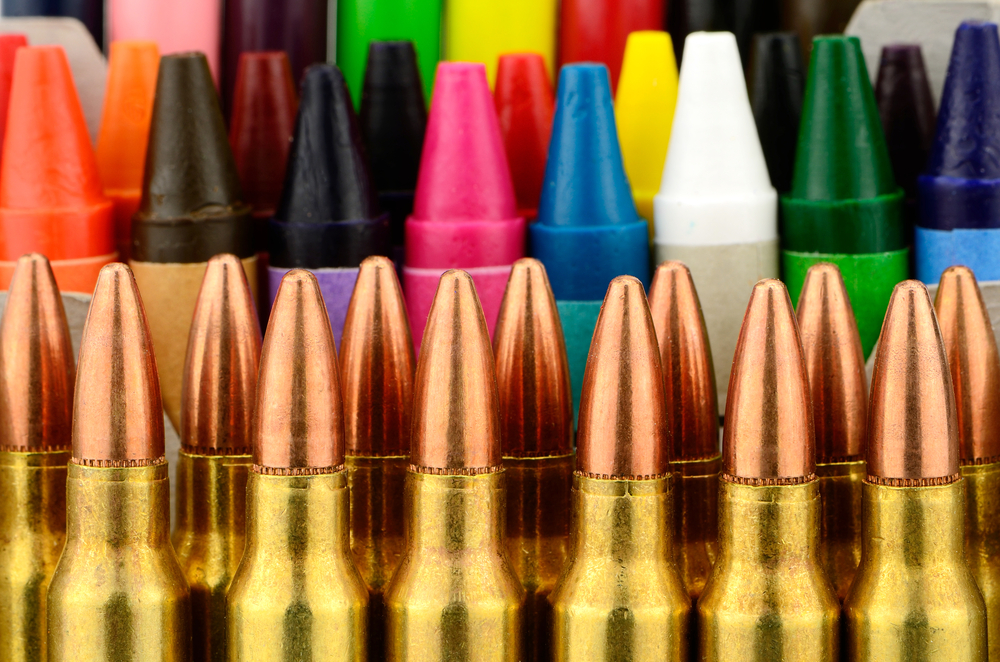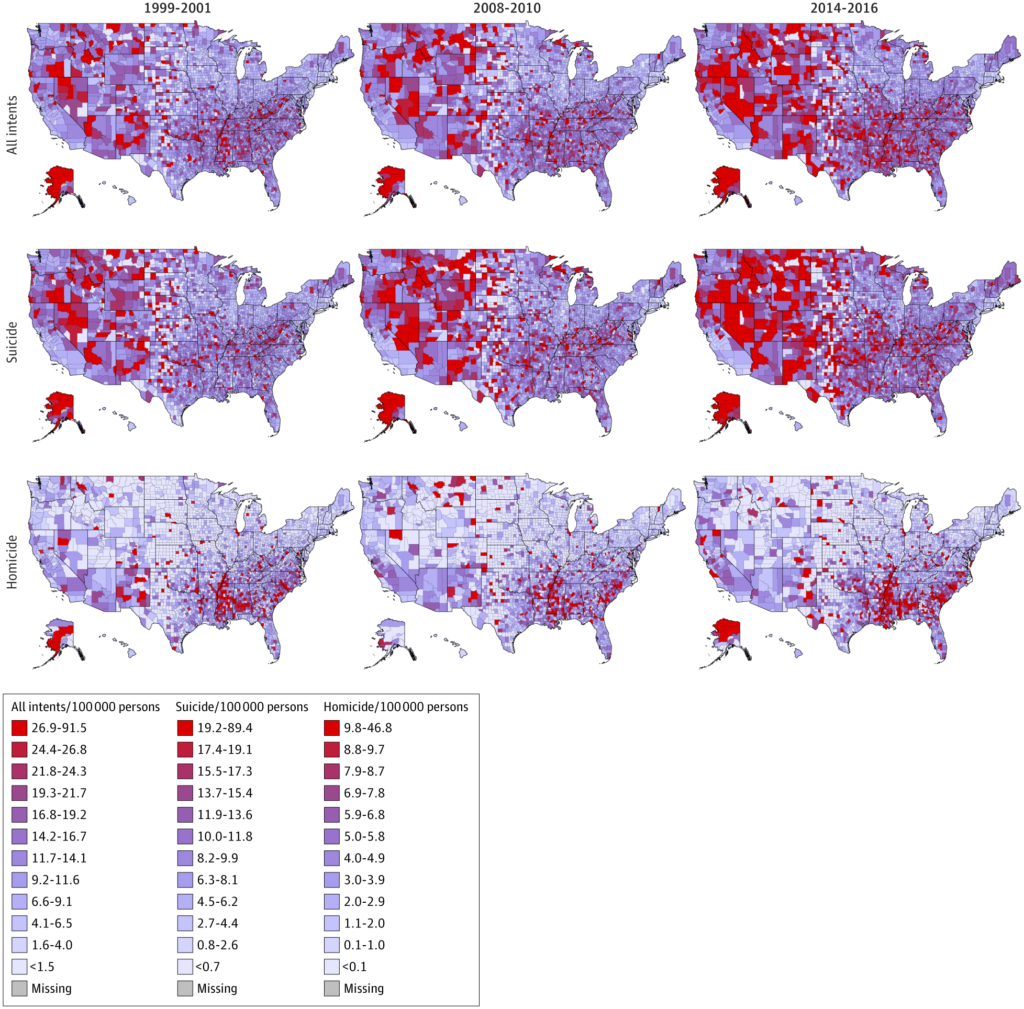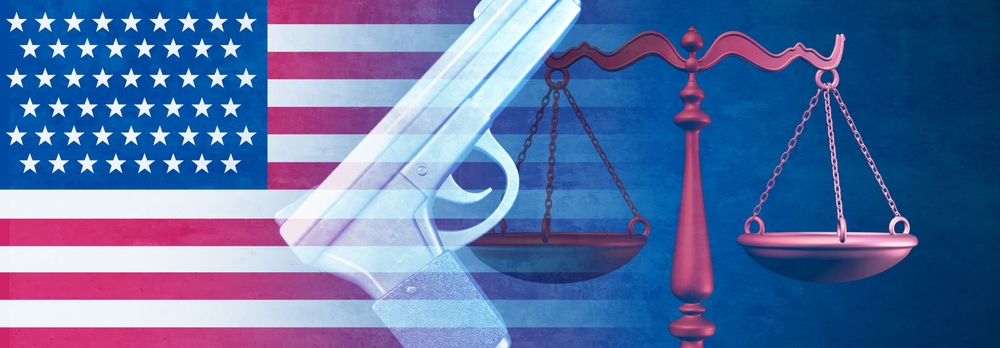
The blue columbines opened on my terrace. They’re among the first plants to flower each Spring, and their deep color and unique bird-like shapes are a cheery signal that winter has gone its way, and the season of renewal is upon us.
But this first flowering also strikes a discordant note because for me the word “columbine” inevitably evokes “Columbine High School,” and the horrific day in April 1999 when two Colorado teenagers walked into their school armed with 9mm semi-automatic weapons, and murdered 12 of their classmates and one of their teachers, for no apparent reason.
At the time, news of this massacre sent shockwaves through a bewildered nation: how was it possible that two kids could become so alienated, so angry that they would plan out and enact a wanton shooting spree and then kill themselves?
The media churned out speculations and analyses. Experts attempted to deduce motives. Political leaders wrung their hands and voiced condolences, along with impassioned affirmations that we as a nation “must do something” about gun control.
Mass shootings no longer shock us the way they did in 1999. They’ve become too common.
In the 24 years since Columbine, there have been 377 school shootings, according to the Washington Post. Over 349,000 kids nationwide have experienced gun violence in the places they go to learn.
In 2023 alone, there have been 245 mass shootings, according to the Gun Violence Archive. That’s roughly 12 per week, on average, and the year’s not even half over. And these are the incidents that get reported.
And that’s in addition to the hundreds more mass shootings—generally defined as incidents involving guns that result in the deaths of four or more people, not including the shooter(s)— in other public places like supermarkets, cinemas, nightclubs, and banks.
In 2023 alone, there have been 245 mass shootings as of the Friday before Memorial Day weekend, according to the Gun Violence Archive—an independent non-profit that collects daily data from 7,500 law enforcement, government, and media sources. That’s roughly 12 per week, on average, and the year’s not even half over. And these are the incidents that get reported.

Each mass murder generates a surge of by-the-minute news flashes, then a predictable canon of motive-mongering, displays of political piety, and detailed analyses of how it all happened, who did what, and who’s to blame. Then comes the redundant roar of arguments about gun control vs gun rights.
And then it all quickly fades into the blur of previous incidents—the Covenant School in Nashville, the Old National Bank in Louisville, the Tops grocery store in Buffalo, Club Q in Colorado Springs, the Star Ballroom near Los Angeles, Richneck Elementary School in Newport News, Pulse Nightclub in Orlando, the Mandalay Bay Resort in Las Vegas….Uvalde, Sandy Hook, and on and on.
A Public Health Crisis
The headline-grabbing massacres are on top of the staggering stats on gun-related incidents that involve fewer than four victims. According to a comprehensive 30-year review published last November in JAMA Open, there have been more than 1.1 million firearm-related fatalities in the US from 1990 to 2021. This includes intentional homicides, suicides, and unintentional or accidental gun deaths.
Gun-related mortality has increased by 46% since 2004, from a low of roughly 10 per 100,000 citizens to a peak of nearly 15 per 100,000 in 2021 (Rees CA, et al. JAMA Open Netw. 2022).
Eric Fleegler, MD, MPH, a professor of pediatrics and emergency medicine at Harvard, and one of the study’s authors told Holistic Primary Care that if other any disease showed a steady mortality increase of the magnitude we’re seeing with gun violence, it would spark a major public health response.
Gun-related mortality has increased by 46% since 2004, from a low of roughly 10 per 100,000 citizens to a peak of nearly 15 per 100,000 in 2021.
Rees CA, et al. JAMA Open Netw. 2022
In fact, the gun violence issue has elicited strong statements from several medical organizations. The American Public Health Association has deemed it, “a major public health problem and a leading cause of premature death.” In its 2018 position paper, the American Academy of Family Physicians states: “Gun violence is a national public health epidemic that exacts a substantial toll on the US society.”
AAFP joined the American Academy of Pediatrics, American College of Physicians, American College of Obstetricians and Gynecologists, and the American Psychiatric Association in a call-to-action, demanding that the president and congress:
- Label violence caused by the use of guns as a national public health epidemic.
- Fund appropriate research as part of the federal budget.
- Establish constitutionally appropriate restrictions on the manufacturing and sale, for civilian use, of large-capacity magazines and firearms with features designed to increase their rapid and extended killing capacity.
Those are noble intentions. But like many such statements in the past, they’ve done little to stem the tide of gun-related bloodshed. As Rees, Fleegler, and colleagues show in their study, gun violence has increased since the Covid pandemic all over the country.

Half Measures
Last Spring, President Biden signed into law the Bipartisan Safer Communities Act which increased funding for community-based mental health services, and expanded background checks for gun purchases by individuals under age 21, and bolstered states’ rights to impose “red flag” rules preventing gun purchases by people with histories of violence or severe mental illness.
The bill is notable because it is the first significant piece of federal-level gun legislation in 30 years, and because it was introduced in the Senate by Marco Rubio (R-FL) and endorsed by 15 Republican senators.
In March of this year, the Biden administration issued an executive order calling for near-universal background checks, wider use of “extreme protection orders,” tigher regulation of gun industry marketing tactics, and strengthening of law enforcement efforts to reduce the number of firearms “lost” or stolen during shipping.
These efforts are commendable. There’s no question that we need better mental health services, and tighter control on who’s able to obtain guns.
It’s the Bullets
But these measures—like much of the dialog about gun control—miss an important truth: it is not the guns themselves that kill and maim, it’s the bullets. If we truly want to do something about our heinous rates of violent deaths, we need to regulate access to ammunition.
And there’s a simple, market-based way to do that: Mandate gun-owner’s insurance in all 50 states, and require proof of insurance for ammunition purchases.
Now, if you’re a long-time HPC reader, you probably know that I’m not a big fan of the insurance industry. In healthcare, insurance has morphed into a ravenous profit-driven monster that all-too-often denies people the care they need, while making physicians so miserable that one in every five doctors is contemplating a career change.
But in the context of liability for gun violence, I strongly believe an insurance-based approach, especially if coupled with restrictions on ammo purchase, could potentially align financial pressures to keep lethal hardware out of the hands of irresponsible, dangerous people.
A Middle Path
Gun rights advocates claim—and rightly so—that the overwhelming majority of American gun owners are responsible people who keep firearms to protect themselves and their families, or for hunting, or simply as a hobby.
Gun liability insurance, coupled with requirements to prove that one’s guns are insured before buying ammunition is one very practical way for gun owners could prove they are, in fact, responsible. It would simultaneously provide a strong financial backstop to cover the medical and ancillary costs in case a 6-year-old kid happens to get hold of Daddy’s 9mm, takes it to school, and shoots his teacher.
It is not the guns themselves that kill and maim, it’s the bullets. If we truly want to do something about our heinous rates of violent deaths, we need to regulate access to ammunition.
And as long as we’re on the subject of medical costs, who does pay for the costs of care when people are wounded in a mass shooting? Who does pay to support families whose loved ones are killed? It’s not the NRA.
What I’m suggesting here is a “middle path” approach, one that balances the constitutional right to bear arms—a right that millions of Americans hold sacrosanct—with the responsibility to ensure that those rights do not infringe upon the safety and wellbeing of others.
An insurance requirement would not transgress the Second Amendment. It would not involve “taking away” anybody’s guns. It would simply introduce financial accountability into a milieu where, currently, there is very little.
People would still be free to own as many guns as they want, of whatever sort, so long as they are able to pay the insurance premiums. And those premiums would be risk-assessed. A small handgun that a middle-aged woman keeps for protection would not cost as much to insure as a military-grade semi-automatic rifle newly purchased by a 19-year-old kid.
It could be just like automobile insurance—which sets a strong precedent for harm-reduction and accountability via an insurance-based system.
A Strong Precedent
Generally, most people accept the idea that insuring one’s vehicle(s) is reasonable because cars and trucks can, and sometimes do, cause harm to self or others. Likewise, most accept that car insurance premiums vary depending on driver age and experience, type of vehicle being insured, geographic location, past infractions, history of accidents, and other variables. The same principles could be applied to guns—which unlike cars, have no other intrinsic purpose than to injure and kill.
None but the most extreme libertarian considers car insurance to be a Nanny State plot to squelch personal freedom.
This would also be a market-based, financially driven approach to reducing gun violence.
According to Statista’s 2022 data set, roughly 45% of American households own guns, though the figure varies considerably by state. A recent article in The Guardian claims that Americans have bought more than 150 million guns in the 10 years since the Sandy Hook shooting. According to American Gun Facts, a Second Amendment advocacy group, there are roughly 446 million firearms in the US, and the average gun-owner possesses 5 weapons. AGF notes over 21 million guns were purchased in 2020 alone.
That’s a LOT of potential revenue for insurers. And we all know that the insurance industry likes to make money.
Most people accept the idea that insuring one’s vehicle(s) is reasonable because cars and trucks can, and sometimes do, cause harm. Likewise, most accept that car insurance premiums vary depending on driver age and experience, type of vehicle being insured, and other variables. The same principles could be applied to guns—which unlike cars, have no other intrinsic purpose than to injure and kill.
Largely Untested
But an insurance-based system would require a top-down federal mandate. All 50 states would need to enact and enforce it at the same time, or people in insured states will simply go to uninsured states to purchase their hardware and ammunition. Patchwork efforts would do very little.
Given the current state of partisan politics in Washington, such a mandate—even if it were proposed—is a distant dream.
At the same time, some political observers say that Americans, regardless of party affiliation, have seen enough carnage to finally bring the gun control issue to a new tipping point.

Gun liability insurance is not a new idea, but it is largely untested.
A 2013 New York Times article notes that at that time, several states were toying with the idea of insurance requirements for gun ownership, though none of these efforts came to fruition.
In February 2022, the San Jose, CA city council ratified a law requiring gun owners residing within the city limits to insure their guns—either through a specific gun policy or as part of their homeowner’s insurance– against deaths or injuries caused by accidental discharges. According to CNN, there are 50,000 to 55,000 gun households in San Jose.
The move represents the first such law in the nation, and while it’s an important symbolic step, it is unlikely to have major impact. It a very local measure; it only applies to liability from unintentional injuries; there’s no requirement for proof of insurance to access ammunition; and its implementation has, not surprisingly, met with opposition from gun rights groups (though a federal judge recently upheld its constitutionality).
Gun liability insurance, coupled with requirements to prove that one’s guns are insured before buying ammunition is one very practical way for gun owners could prove they are, in fact, responsible.
Beyond the San Jose experiment, a large-scale insurance-driven approach has never even been tried. But Washington Post writers Jason Abaluck and Ian Ayres believe that the concept could have greater public traction now.
In their excellent 2022 article, The Case for Mandatory Gun-Liability Insurance, they state: Gun insurance would accomplish two goals: First, it would raise the cost of gun ownership for people whose firearms are deemed relatively more likely to be used in crimes (by themselves or others), based on an assessment of risk factors made by insurance companies. That would make those people less likely to obtain guns in the first place. Second, it would provide a strong financial incentive for gun owners to keep these weapons out of the hands of people who might commit crimes with them.”
Abaluck and Ayers add that, compared with other regulatory measures such as all-out bans on certain classes of weapons, an insurance-driven system “might win support from conservatives looking for a market-based approach that wouldn’t have much impact on responsible gun owners.”
“When you apply for homeowner’s insurance, they will ask whether you have a swimming pool, trampoline, or an aggressive breed dog. If you apply for life insurance, the agent is going to ask whether you smoke, are overweight or whether you’re a private pilot. They will ask if you scuba dive. But they won’t ask if you keep a firearm in your home or how it’s stored.”
““`Kristen Moore, University of Michigan
Again, the car insurance analogy is helpful. Arguments against a reasonable gun insurance mandate are easily flipped: “Oh, so you prefer irresponsible gun ownership and total lack of accountability for possession of something that is designed to maim or kill? Well, why should we bother to have car insurance? Why are businesses required to have insurance against harm to customers or to the public?”
Viewed rationally, within the context of the broader principles of liability insurance, the objections don’t really hold up.
Do the Numbers Add Up?
The bigger question is whether insurance companies would see enough potential profit to justify a long and ugly wallow into the quagmire of gun politics. Given the sheer numbers of guns and gun owners, it seems like they’d have incentive. But so far, insurers have stayed away from the gun issue.

Do a Google search for “gun insurance” and you’ll come up with lots of hits. But they’re for policies to insure the worth of gun collections in case they’re damaged or stolen. Policies that insure against liability for harm caused by guns are very, very hard to find.
University of Michigan mathematician Kristen Moore, PhD, who researches firearm trends, says that by and large insurers have taken a “don’t ask” stance toward guns.
“When you apply for homeowner’s insurance, they will ask whether you have a swimming pool, trampoline, or an aggressive breed dog. If you apply for life insurance, the agent is going to ask whether you smoke, are overweight or whether you’re a private pilot. They will ask if you scuba dive. But they won’t ask if you keep a firearm in your home or how it’s stored,” she said in a 2018 interview.
Moore, an advocate for gun liability insurance, goes on: “You pay a premium increase if you have a trampoline and a premium increase if you have a swimming pool, but there are measures you can take to ameliorate that risk. You can fence in your pool, for example. Perhaps the same could be done for firearm ownership. If you take a safety training class, or if you have a gun safe, then there might not be as much of a premium increase.”
To the extent that they’ve said anything about it, the insurance industry’s main objection to gun liability insurance seems to be that insurers don’t want to be on the hook for intentional acts of violence by gun owners. In other words, they see gun ownership as high risk.
That alone speaks volumes, and it’s all the more reason why we need some type of system of enforced responsibility.
This would be a “middle path” approach, one that balances the constitutional right to bear arms—a right that millions of Americans hold sacrosanct—with the responsibility to ensure that the exercise of this right does not infringe upon the safety and wellbeing of others.
Moore underscores the fact that gun violence already costs insurers. “People don’t think about this, but the Columbine mass shooting resulted in a homeowner’s liability claim. The Newtown mass shooting resulted in a homeowner’s liability claim. Insurance executives have estimated that the Vegas shooting will result in a billion dollars in claims across multiple lines of insurance.”
Perhaps these occurrences are happening often enough that insurers might now see the potential to make money from gun premiums as a way to offset the massive payouts.
Aligning Incentives
Over the past year, I’ve talked to many people in diverse professions, and from various walks of life about the general idea of gun owner’s insurance coupled with requirements for proof of insurance before purchasing ammunition.
Most view the core principles as sound and sensible, though all agree that politically, any sort of gun control measure would meet with furious opposition from Second Amendment extremists, some of whom have gone so far as to call for abolition of the federal Bureau of Alcohol, Tobacco, and Firearms in its entirety.
To the extent that they’ve said anything about it, the insurance industry’s main objection to gun liability insurance seems to be that insurers don’t want to be on the hook for intentional acts of violence by gun owners. In other words, they see gun ownership as high risk. That alone speaks volumes.
Harvard’s Dr. Fleegler says, gun liability insurance, “Makes enormous sense. If you get a trampoline in your yard, or a pool, the insurance companies will raise your rates. These things have injury rates much lower than guns.”

Even if major insurers were to support a movement toward gun liability, implementation of such a system would face logistical challenges beyond the inevitable pushback from gun rights extremists.
As Abaluck and Ayres point out in their Washington Post piece, such a system would depend on insurers having access to gun trace data, and that would require changes to the so-called Tiahrt amendments included in Department of Justice appropriations bills since 2003. These amendments block anyone but law enforcement agencies from receiving information obtained from gun traces done by the Bureau of Alcohol, Tobacco, Firearms and Explosives.
It is true that setting up an entirely new insurance-based system for responsible gun ownership and ammunition access would face daunting difficulties. But we desperately need a new approach to a social and medical problem that is raging out of control. The alternative is more mayhem, followed by more ineffective pontificating.
Gun insurance won’t entirely solve the problem of gun violence. It won’t address economic disparities, the epidemic of mental illness, or the nation’s cultural obsession with violence as a preferred means of problem-solving.
There will always be black market weapons, “ghost gun” assembly kits, and 3D-printed weapons. And if gun insurance is mandated, there will inevitably be people who shirk the laws just like there are people who now drive uninsured vehicles.
But a comprehensive system of gun liability insurance could potentially drive greater accountability and responsibility through financial incentives and penalties, the one language that everyone seems to respect.
It’s a middle-road, market-based, potentially bipartisan approach that does not involve banning anything or infringing on constitutional rights. For reducing the horrific burden of gun-related death and disability, it just might be our country’s best shot.
A few weeks ago, I was in a wine store. I went to the checkout counter with my selections, and the cashier asked for my ID. I’m a few decades past age 21, as my grey beard proudly announces wherever I go. So, I was quite surprised to be carded. The cashier proceeded to scan my driver’s license, which struck me as very strange.
When I asked what was going on, she said she’s required to scan everyone’s ID—regardless of age—in order to activate the cash register.
I walked out of the store shaking my head, thinking “I wish they had a system like that to control who can buy bullets.”
END







